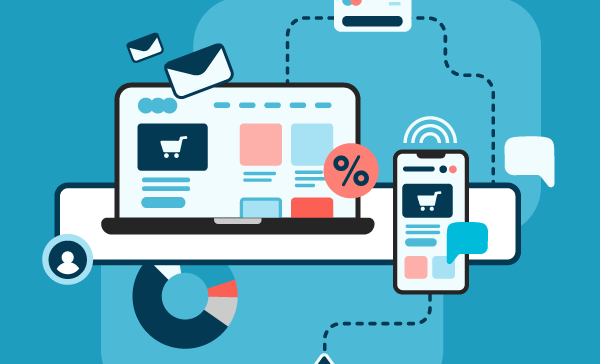E-commerce: the guide that helps you sell online with email and SMS

This year, e-commerce was the true star of the online stage. In a sudden, unexpected emergency where all predictions were in vain, e-commerce represented the only foothold and bulwark of normality for millions of people around the world. The health emergency has changed us as individuals and as consumers. If you have an e-commerce or if you’re thinking to open one, then there are a few things you need to know.

From developing integrations to strategic support, from creating creative concepts to optimizing results.
2020: An atypical year that will forever change selling online
In 2020, every accounting forecast in every sector—both on and offline—was turned upside down. Historically leading sectors like tourism and fashion experienced an unprecedented global collapse. On the other hand, online commerce received a surge beyond all expectations.
In this chaos of instantaneous sales spikes and crashes, we saw how consumers’ buying habits changed abruptly, and how new behaviors seemed stable and lasting.
E-commerce is ready for a new phase, and those who sell online must know the new web commerce. After 2020, there’s no going back.
The secret to selling online: an interconnected e-commerce
Understanding why an online store sells just a little or not enough isn’t easy—especially if we consider the virtual store as a single unit with only 2 inputs: entry (a user visiting the store) and exit (the user buys and becomes a customer, or leaves the site without buying).
E-commerce activities are not compartments that can be analyzed separately. This is especially true today, with solutions that make passing information between one sub-system to another more fluid. An e-commerce is made up of external databases, CRM, CMS, and Email Marketing platforms. These different systems need to communicate with each other and share information for the main system to evolve (and increase conversions).
To better understand online commerce and support new consumer behaviors, MailUp has developed a checklist dedicated to e-commerce sales strategies with email and SMS
Selling online: integrated strategies for e-commerce in 6 steps
The checklist outlines 6 fundamental activities so that an e-commerce can go through the entire relationship cycle with the customer. It involves creating an integrated system with a 360° view of the customer’s profile and making a multi-channel strategy, which uses various tools to create a valuable relationship with the user.
Step 1 – The digital ecosystem convergence
E-commerce digital structures are complex and work best when their sub-systems are interconnected. External databases, CRM, CMS, ERP, Business Intelligence systems, and email advertising platforms: data must pass from one system to another to fully harness their potential and improve the overall system. Integrations and connectors allow an online store’s data to circulate, enriched with valuable information about the user. The contact base can then be profiled and segmented to create personalized and relevant communications that are way more effective than generic ones.
Step 2 – Deliverability
Today, email is still a marketing tool with one of the highest ROI for an e-commerce. However, to get results from this sales channel, you need to make sure that the first step of the strategy—email reception—works correctly. Indeed, every Email Marketing strategy is futile if the mailings do not reach their destination or end up in spam. Some best practices help get a mailing through. This will then make an online store’s conversions go up.
Step 3 – Data mapping
All customer information must be mapped to develop segmented Email and SMS Marketing campaigns. This way, those who manage an e-commerce can create 360° contact profiles in the database and develop hyper-personalization strategies to take advantage of Marketing Automation solutions. Besides synchronizing data, let’s take a look at how to track strategic information and integrate it with an Email Marketing platform.
Step 4 – Personalization and hyper-personalization
Everything’s traceable online. This means that those who manage an e-commerce can profile their customers and prepare customized conversion strategies. Advanced filters let you segment database contacts precisely, cluster them, and create dynamic mailings specific to each recipient.
Step 5 – Marketing Automation: practical uses
Many companies rely on Marketing Automation to send their emails since automatic messages are timely, personalized, and relevant. Let’s look at the buyer’s journey to trigger automatic flows and some workflow examples.
Step 6 – Multichannel: Email and SMS Marketing Automation
SMS mailings have about a 98% open rate: integrating them into an Email Marketing strategy means ensuring that your messages reach your contacts with a very low failure margin. Now let’s check out the SMS Marketing features and see how we can use SMS to both relaunch the dialogue with your customers and re-engage them through emails.
In summary
Learning how to manage the tools of an e-commerce means improving online conversions and building loyalty in your contact base. Start now boosting your online sales strategy with Email and SMS.